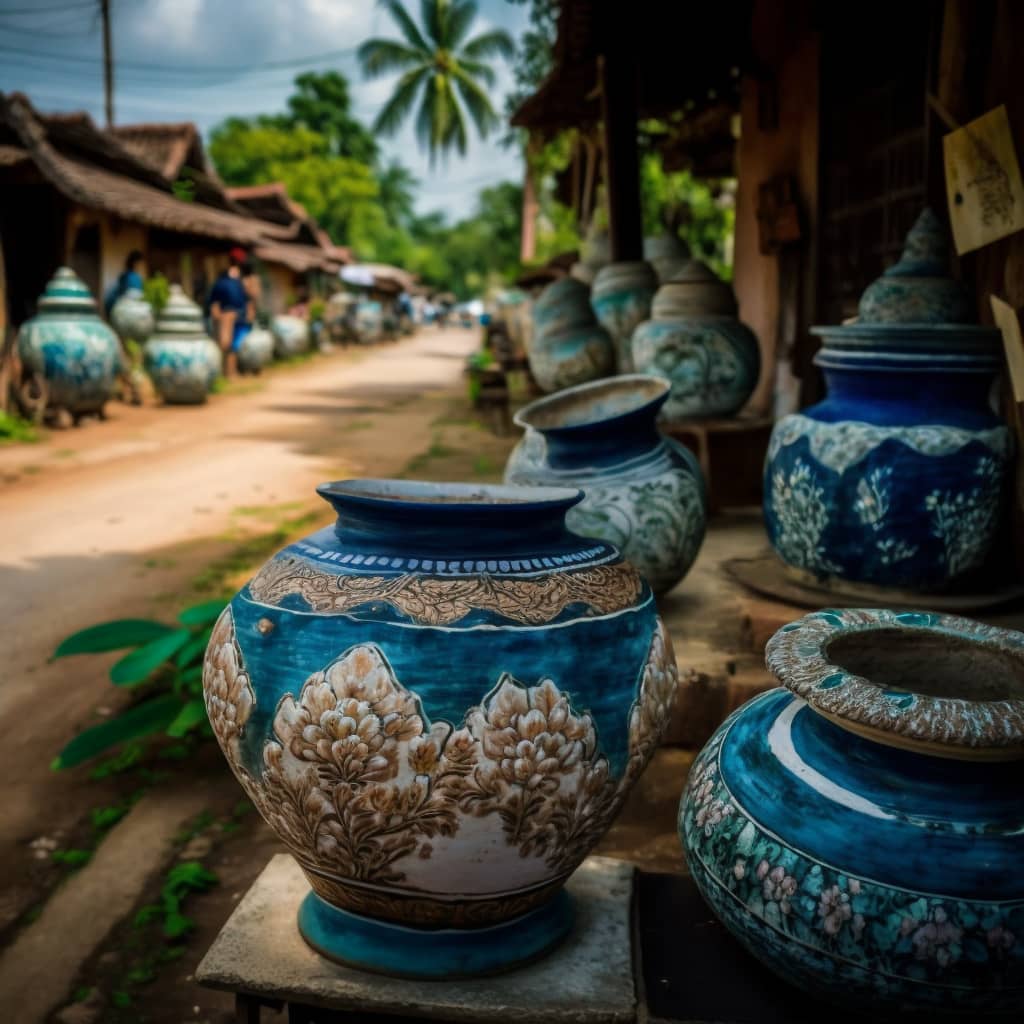Have you ever wondered about the rich pottery heritage of Thailand? Well, get ready to dive into the fascinating world of Thai pottery, where centuries-old traditions continue to thrive to this day. In this article, we’ll take a closer look at the art of Thai pottery and how it has shaped the country’s cultural identity. From intricate designs to unique techniques, there’s so much to discover and appreciate. So, let’s get started and delve into Thailand’s ancient pottery traditions!
Thai pottery has a history that dates back thousands of years, playing a significant role in the country’s cultural and artistic heritage. The art of pottery in Thailand is not just about creating beautiful objects; it is also deeply rooted in spirituality and daily life. From utilitarian pieces like plates and bowls to ornate decorative items, Thai pottery showcases the skill and creativity of its craftsmen.
In our exploration of Thai pottery, we’ll learn about the various regions in Thailand that have distinct pottery traditions. Each region has its own unique style, including different types of clay, techniques, and designs. Whether it’s the intricate patterns of Sawankhalok pottery or the bold and colorful motifs of Lai Nam Thong pottery, the diversity and artistry in Thai pottery is truly captivating.
So, if you’re curious to learn more about Thailand’s rich pottery heritage, stay tuned for our upcoming articles. We’ll delve deeper into the history, techniques, and cultural significance of Thai pottery, allowing you to appreciate the beauty and artistry of this ancient craft. Exciting discoveries await as we unravel the secrets of Thailand’s pottery traditions!
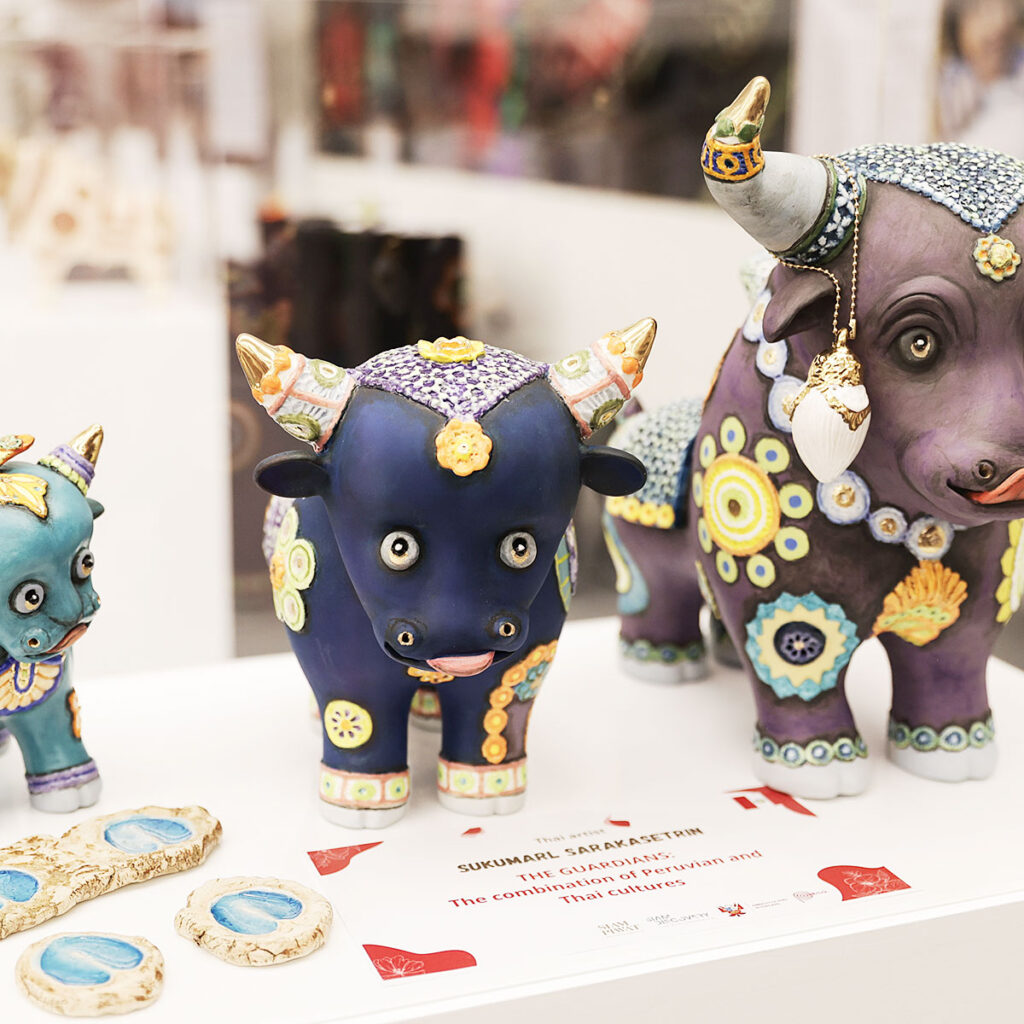
Introduction to Thailand’s Pottery Heritage
Thailand is renowned for its rich cultural heritage, and one aspect that exemplifies this is its long and fascinating history of pottery. For centuries, Thai artisans have been honing their skills in the creation of beautiful ceramics that not only serve practical purposes but also hold deep symbolic meaning. In this article, we will delve into the historical background of pottery in Thailand, explore its significance in Thai culture, delve into the traditional techniques and styles of Thai pottery, and examine its influence on Southeast Asian art.
Historical background of pottery in Thailand
The origins of pottery in Thailand can be traced back to ancient times, with evidence of ceramic production dating back thousands of years. Archaeological findings have shown that pottery was being made in Thailand as early as the Neolithic period. Various ancient civilizations, such as the Dvaravati and Khmer empires, have left behind remnants of exquisite pottery, which provide valuable insights into the artistic skills and cultural practices of Thailand’s past civilizations.
Significance of pottery in Thai culture
Pottery has deep cultural significance in Thai society, serving both practical and spiritual purposes. Traditionally, pottery has played a crucial role in everyday life, with items such as cooking vessels, water jars, and storage containers being essential household items. Ceramics have also been used for religious and ceremonial purposes, such as in the creation of Buddhist statues and temple decorations. The fine craftsmanship and intricate designs found on Thai pottery are a testament to the importance placed on artistic expression in Thai culture.
Traditional techniques and styles of Thai pottery
Thai pottery is known for its distinct styles and techniques, which have been passed down through generations. Traditional Thai pottery techniques involve various stages, including clay preparation, throwing and hand-building methods, decoration, glazing, and firing processes.
The clay used in Thai pottery is sourced from different regions, each providing unique qualities that contribute to the final product. Some clays are known for their plasticity and durability, while others lend themselves well to intricate carving and detail work. Artisans carefully select the appropriate clay for their desired outcome, ensuring that the material’s properties complement their artistic vision.
The throwing technique involves shaping the clay on a potter’s wheel, resulting in symmetrical vessels. Hand-building methods, such as coiling and slab construction, are also widely employed to create more intricate and delicate forms. Once the structure is complete, artisans apply decorative elements using techniques like carving, painting, and incising. Glazing provides both aesthetic appeal and a protective layer, and different glaze recipes are used to achieve a range of colors and finishes.
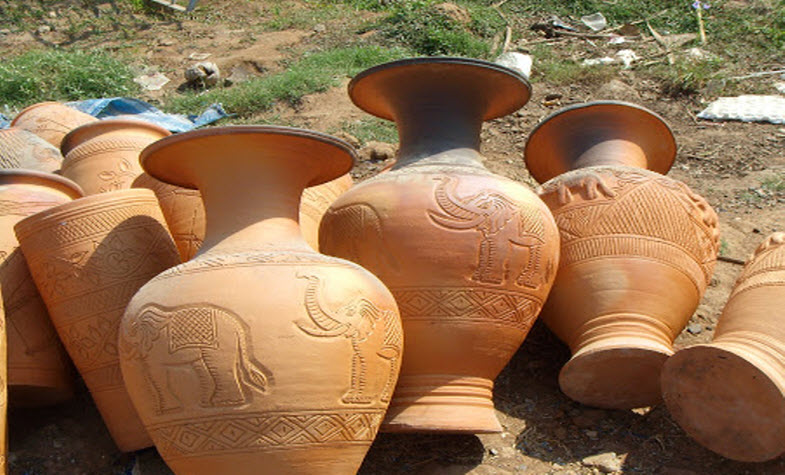
Influence of Thai Pottery on Southeast Asian Art
Thailand’s pottery heritage has had a profound influence on the art of neighboring countries in Southeast Asia. The region’s shared history and interconnected trade routes enabled the exchange of artistic ideas and techniques, resulting in the development of distinctive ceramic traditions.
Interactions and trade routes shaping pottery traditions
Thailand’s strategic location at the crossroads of major trade routes played a vital role in the development and dissemination of its pottery traditions. The Kingdom of Funan, which encompassed parts of present-day Thailand, Cambodia, and Vietnam, was a significant hub for maritime trade during ancient times. This facilitated the exchange of not only goods but also ideas and artistic influences. As a result, Thai pottery absorbed elements from various cultures, particularly those of China and India.
Distinctive characteristics of Thai pottery
Thai pottery sets itself apart by its unique designs and motifs. Intricate patterns, such as lotus flowers, mythical creatures, and traditional Thai symbols, are often featured on ceramics, reflecting the country’s deep-rooted cultural heritage. The use of vibrant colors and intricate details showcases the meticulous craftsmanship for which Thai pottery is known.
Influence on neighboring countries’ ceramics
Thai pottery had a profound influence on the ceramic traditions of neighboring countries, particularly Cambodia and Vietnam. The Khmer Empire, centered in present-day Cambodia, drew inspiration from Thai pottery techniques, incorporating them into their own distinct style. Similarly, Vietnamese ceramics adopted Thai motifs and decorative elements when the Thai and Vietnamese cultures converged during the period of the Cham Empire.
Traditional Thai Pottery Techniques
Thai pottery encompasses a range of techniques that have been perfected over centuries. These techniques involve clay preparation, throwing, hand-building, decoration, glazing, and firing processes.
Clay preparation and sourcing
Clay preparation is a meticulous process that entails selecting, purifying, and refining the clay before it can be transformed into pottery. The type of clay used and the preparation techniques employed can greatly affect the final product’s qualities, such as its color, texture, and durability. While some potters source their clay from local deposits, others rely on commercial sources or mix different types of clay to achieve desired characteristics.
Throwing and hand-building methods
The throwing technique involves shaping the clay on a potter’s wheel, resulting in symmetrical vessels. Hand-building methods, such as coiling and slab construction, are also widely employed to create more intricate and delicate forms. These methods allow for greater artistic freedom, enabling artisans to create unique shapes and designs that reflect their cultural heritage.
Decoration and glazing techniques
Decoration plays a vital role in Thai pottery, with artisans employing various techniques to enhance the aesthetic appeal of their creations. Carving, painting, and incising are commonly used to create intricate patterns and designs. Glazing is another crucial step that not only adds a layer of protection but also enhances the pottery’s appearance, giving it a lustrous finish. Different glaze recipes are used to achieve a range of colors and finishes, allowing for endless possibilities in ceramic design.
Firing processes
Firing is the final step in the pottery-making process. Traditionally, Thai potters used wood-fired kilns, which provided a distinctive quality to the ceramics. The firing process can greatly impact the final appearance of the pottery, with variables such as temperature, duration, and atmosphere influencing the outcome. In recent years, modern technologies and electric kilns have become more prevalent, offering more precise control over the firing process.
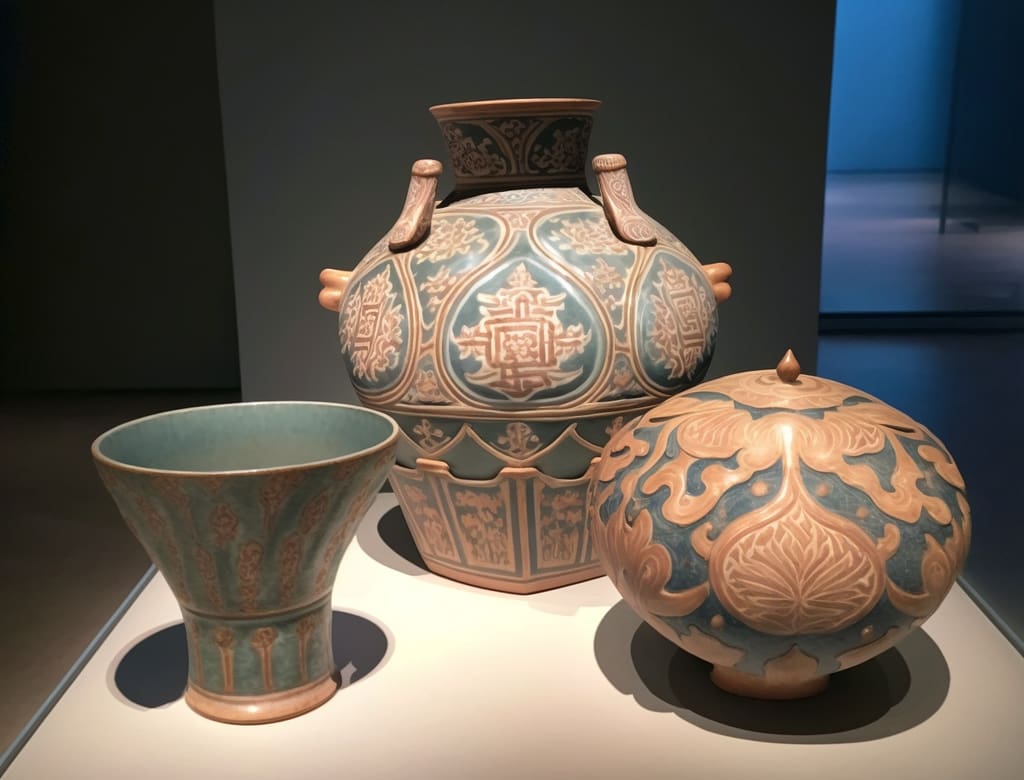
Varieties of Thai Pottery
Thai pottery exhibits a wide range of styles and varieties, with each region having its distinctive characteristics. These regional variations are a testament to the diverse cultural influences and unique artistic expressions found throughout Thailand.
Regional variations in pottery styles
Chiang Mai, located in Northern Thailand, is renowned for its traditional pottery villages. Here, artisans employ unique techniques and designs, often incorporating traditional Lanna motifs, such as intricate floral patterns and animal figures. The utilization of earthy tones and rustic finishes is a hallmark of Chiang Mai pottery.
Sukhothai, the ancient capital of Thailand, is famous for its Sangkhalok ceramics. These ceramics feature a distinctive green glaze and elegant simplicity in form and design. Sangkhalok ware was highly coveted during the 13th and 14th centuries and remains an iconic representation of Thailand’s pottery heritage.
Lampang, another region known for its ceramics, is famous for its production of celadon pottery. Celadon is characterized by its characteristic green glaze and is highly regarded for its delicate appearance and craftsmanship. Lampang celadon exhibits intricate carvings and designs that showcase the skill and artistry of local potters.
Ban Chiang, an ancient archaeological site in northeastern Thailand, is renowned for its red pottery. The pottery found at Ban Chiang dates back over 3,000 years and provides significant insights into prehistoric Thai culture. The distinct red color, achieved through firing techniques and local clay, makes Ban Chiang pottery easily recognizable and highly prized.
Different types of functional and decorative pottery
Thai pottery encompasses a wide range of functional and decorative items. Traditional functional pottery includes cooking vessels, water jars, storage containers, and tableware. Decorative pottery, on the other hand, ranges from ornamental figurines to intricately carved vases and bowls. These ceramics often serve not only as artistic expressions but also as symbols of good luck and prosperity.
Pottery as religious and ceremonial art
Pottery has played a crucial role in religious and ceremonial practices in Thailand. Buddhist temples and shrines are adorned with pottery, with intricate designs and motifs reflecting Buddhist beliefs and teachings. Pottery is also used in traditional ceremonies, such as weddings and religious festivals, where it serves as an offering and symbol of cultural significance.
Famous Pottery Centers in Thailand
Thailand is home to several pottery centers that have gained recognition both domestically and internationally for their craftsmanship and artistic heritage. These centers provide valuable insight into Thailand’s pottery traditions and offer visitors an opportunity to witness the skill and artistry of local potters firsthand.
Chiang Mai and its traditional pottery villages
Chiang Mai, located in Northern Thailand, is a hub of pottery craftsmanship. The city is home to several traditional pottery villages, such as Ban Phor Liang Meun and Baan Bat, where artisans carry on age-old techniques and styles. Visitors to these villages can observe potters at work, learn about the traditional processes, and even try their hand at creating their pottery.
Sangkhalok ceramics of Sukhothai
The ancient capital of Sukhothai is renowned for its Sangkhalok ceramics. The Sukhothai kingdom, flourishing from the 13th to 14th century, produced exquisite ceramic wares that were highly sought after in regional trade. Today, artisans in Sukhothai continue to create replicas of these historical ceramics, preserving the unique style and traditions for future generations.
Celadon production in Lampang
Lampang, a province in Northern Thailand, is well-known for its production of celadon pottery. Celadon, characterized by its distinctive green glaze, represents a fusion of Thai and Chinese ceramic traditions. The craftsmanship and artistry inherent in Lampang celadon have gained international recognition and are a testament to the region’s dedication to preserving Thailand’s pottery heritage.
Ban Chiang’s ancient pottery
Ban Chiang, an archaeological site in northeastern Thailand, is a UNESCO World Heritage Site renowned for its ancient pottery. The pottery discovered at Ban Chiang dates back over 3,000 years and provides valuable insights into Thailand’s prehistoric past. Today, visitors can explore the site and witness the remarkable craftsmanship of these ancient potters.
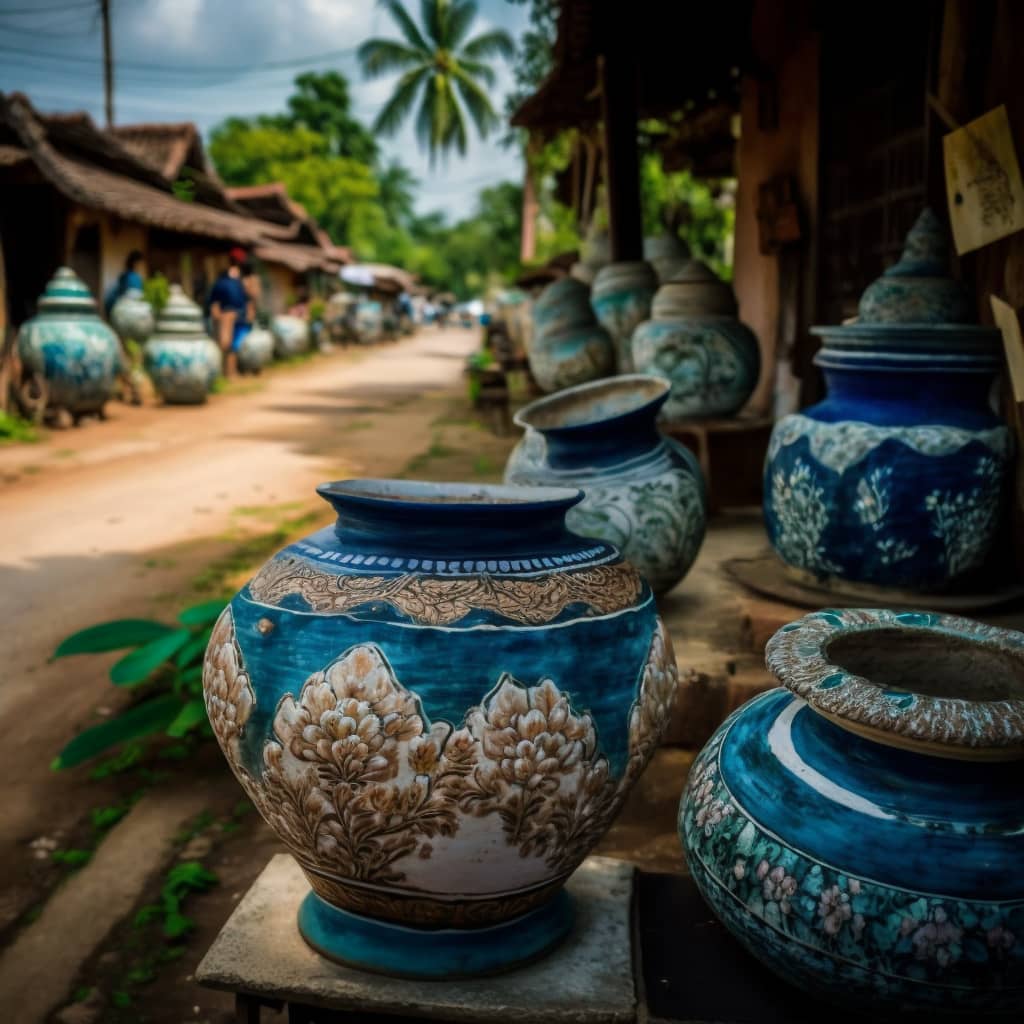
Preservation and Revival Efforts
Preserving and reviving Thailand’s pottery heritage is of paramount importance. Efforts are underway to conserve historical artifacts, revive lost pottery techniques, and promote pottery as a cultural heritage both domestically and internationally.
Conservation of historical pottery artifacts
Thai authorities and organizations are actively involved in the conservation and restoration of historical pottery artifacts. Museums and heritage sites play a crucial role in safeguarding these treasures, offering insights into Thailand’s rich cultural history. Preservation efforts are complemented by ongoing research and documentation, contributing to a greater understanding of Thai pottery traditions.
Reviving lost pottery techniques
In addition to conserving historical artifacts, efforts are underway to revive lost pottery techniques that may have become endangered or forgotten. Artisans and organizations are actively exploring ancient texts, studying archaeological findings, and learning from elder generations to revive traditional techniques and ensure their continuation for future generations.
Promoting pottery as a cultural heritage
Promoting pottery as a cultural heritage is integral to its preservation and appreciation. Thailand’s government, along with various private organizations, collaborates to support pottery-related projects, exhibitions, and festivals. These initiatives not only bring recognition to the skills of local artisans but also provide platforms for cultural exchange and understanding.
Contemporary Thai Ceramic Artists
While traditional techniques and styles continue to be cherished, contemporary Thai ceramic artists are also exploring modern interpretations of Thai pottery. These artists combine traditional craftsmanship with innovative techniques, pushing boundaries and creating unique ceramic artworks that reflect Thailand’s rich cultural heritage.
Exploring modern interpretations of Thai pottery
Contemporary Thai ceramic artists embrace their cultural heritage while incorporating modern aesthetics and design principles into their work. They experiment with unconventional forms, diverse materials, and innovative techniques, challenging traditional notions of what pottery can be. Through their creations, these artists bridge the gap between the old and the new, creating a new narrative for Thai pottery in the 21st century.
Innovative techniques and experimentation
Contemporary ceramic artists in Thailand are not afraid to experiment with new techniques and materials. They incorporate various innovative approaches, such as combining traditional pottery with other art forms like sculpture and painting. This experimentation breathes new life into Thai pottery, pushing the boundaries of artistic expression.
Famous contemporary ceramic artists
Thailand is home to several famous contemporary ceramic artists whose works have gained international recognition. Artists like Vipoo Srivilasa and Somluk Pantiboon have achieved acclaim for their unique styles and innovative approach to pottery. Their works, often drawing inspiration from Thai culture and traditions, are highly sought after by collectors and art enthusiasts worldwide.
Pottery Tourism in Thailand
Thailand’s rich pottery heritage has become a popular attraction for both domestic and international tourists. Visitors have the opportunity to explore pottery villages, visit workshops, and even participate in pottery classes and workshops.
Visiting pottery villages and workshops
Pottery villages and workshops across Thailand offer visitors an immersive experience into the world of Thai pottery. Here, visitors can observe local artisans at work, witness the various stages of pottery-making, and even purchase unique pieces directly from the source.
Participating in pottery classes and workshops
Pottery classes and workshops cater to both beginners and experienced individuals interested in learning the craft. These classes provide hands-on experience, allowing participants to mold clay, shape vessels, and experiment with various techniques under the guidance of skilled instructors. Engaging in these classes not only imparts a deeper appreciation for the art but also fosters creativity and self-expression.
Pottery festivals and exhibitions in Thailand
Thailand hosts several pottery festivals and exhibitions throughout the year, celebrating and showcasing the country’s pottery heritage. These events bring together potters, artists, and enthusiasts from around the world, creating opportunities for cultural exchange and appreciation. Festival-goers can immerse themselves in the vibrant atmosphere, witness pottery demonstrations, and purchase unique pottery pieces from talented artisans.
Impact of Globalization on Thai Pottery
Globalization has brought both challenges and opportunities to Thai pottery. While it has opened up new markets and facilitated the exchange of ideas and techniques, it has also posed challenges to preserving traditional techniques and designs.
Challenges and opportunities in the global market
Thailand’s pottery industry has expanded its reach beyond its borders, with Thai ceramics now being sought after worldwide. Global markets provide opportunities for local artisans to showcase their skills and gain recognition, boosting the country’s economy. However, global competition also poses challenges, as mass-produced and low-cost ceramics can undermine the market for handmade, traditional Thai pottery.
Influence of modern trends and designs
Modern trends and designs have made their way into Thai pottery, as artisans adapt to changing consumer preferences. Some contemporary Thai potters incorporate modern techniques and aesthetics, catering to a wider audience. While this infusion of modernity ensures the continued relevance of Thai pottery, it is crucial to strike a balance between innovation and preserving traditional techniques and styles.
Preserving traditional techniques in a changing world
Preserving traditional techniques and styles amidst a changing world is a delicate endeavor. Thai artisans and organizations recognize the importance of maintaining age-old practices, ensuring that future generations can continue to learn and appreciate this cultural art form. By providing support, promoting cultural education, and fostering collaborations, efforts are being made to strike a harmonious balance between tradition and innovation.
Conclusion
Thailand’s rich pottery heritage is a testament to the country’s artistic prowess and cultural significance. From ancient civilizations to contemporary ceramic artists, Thailand has continuously embraced and evolved its pottery traditions, reflecting a deep appreciation for art and craftsmanship. As we have explored in this article, Thailand’s pottery heritage encompasses a fascinating history, diverse techniques and styles, regional variations, and its influence on Southeast Asian art.
It is essential to preserve and promote Thai pottery as a cultural heritage, ensuring its continuity and appreciation by future generations. By conserving historical artifacts, reviving lost techniques, and fostering cultural exchange, Thailand can continue to celebrate its rich pottery heritage. The exploration of modern interpretations by contemporary ceramic artists and the engagement of pottery tourism further contribute to the thriving legacy of Thai pottery.
As Thailand continues to navigate the challenges and opportunities of globalization, it is crucial for the country to strike a balance between preserving traditional techniques and embracing modern trends. By doing so, Thailand can ensure that its pottery heritage remains a vibrant and dynamic cultural art form, cherished for generations to come.
